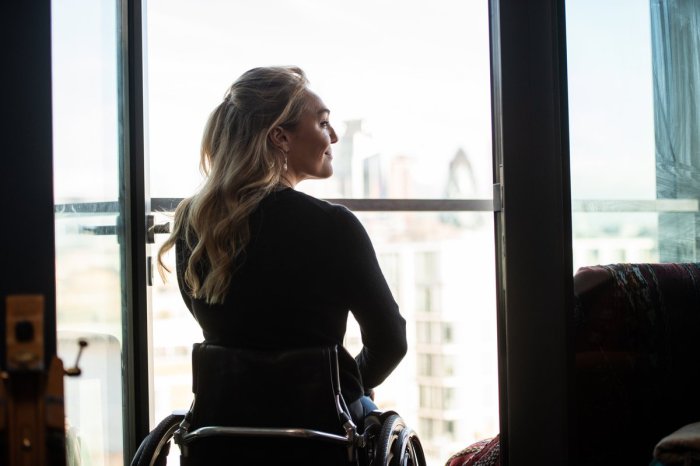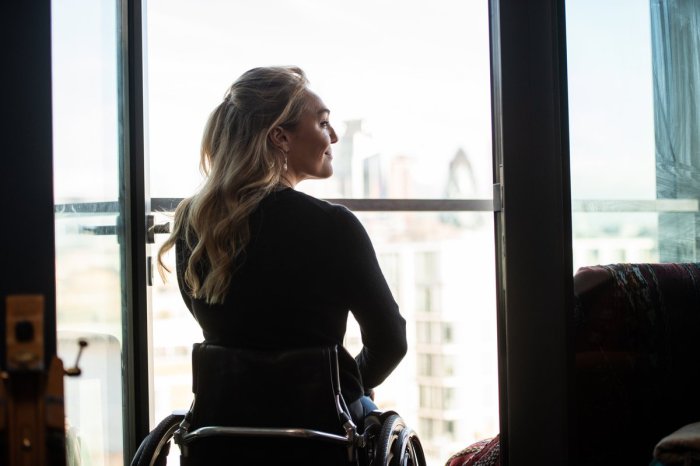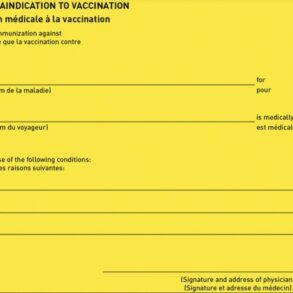Airbnb accessibility disability filters update aims to improve the search experience for travelers with disabilities. This update addresses the current limitations of the filters, considering user needs and accessibility standards. It’s designed to make finding accessible accommodations easier and more inclusive, while also providing clear guidance for hosts.
The existing filters often lack the specific details needed by users with various disabilities. This update promises more detailed information about accessibility features, like wheelchair ramps, grab bars, and accessible entrances. The goal is to empower users to find accommodations that best suit their needs. Users will hopefully find a more intuitive and comprehensive filter system.
Overview of Airbnb Accessibility Filters

Airbnb’s accessibility filters are a valuable tool for travelers seeking accommodations that meet their specific needs. These filters provide a streamlined way to find listings that have been reported to include accessible features. This allows users to focus their search and locate properties suitable for individuals with various disabilities, promoting inclusivity and enhancing the travel experience for everyone.
Current State of Airbnb Accessibility Filters
The current implementation of Airbnb accessibility filters allows users to narrow their search based on reported accessibility features. This approach offers a starting point for identifying listings that may meet a traveler’s needs. However, it’s crucial to understand that the accuracy and comprehensiveness of the reported features are not guaranteed.
Functionality of the Filters
Airbnb’s accessibility filters enable users to specify their requirements by selecting criteria like wheelchair accessibility, visual accessibility, hearing accessibility, or mobility assistance. These options often include specific details such as the presence of ramps, grab bars, visual aids, or assistive listening devices. This functionality aims to help travelers with various needs easily find suitable accommodations.
Limitations of the Filters
While useful, the accessibility filters have limitations. Reported features might not always be accurately reflected in the listing, and the level of detail about accessibility varies significantly between listings. Some listings may lack information altogether, potentially leading to mismatches between expectations and reality. Furthermore, the filters might not cover all types of accessibility needs, potentially leaving some users with specific requirements without a suitable match.
Information Displayed within Filters
The filters currently display a range of information regarding accessibility features. This includes details about wheelchair accessibility, such as the presence of ramps, elevators, and accessible bathrooms. For visual impairments, the filters may indicate the availability of large-print materials or assistive technologies. Similarly, hearing impairments might be addressed by information about captions or assistive listening devices. Users can often filter by specific mobility needs, like grab bars, and mobility aids.
Using the Filters for Users
Users can utilize these filters in a straightforward manner. Typically, the user navigates to the Airbnb search page and then selects the accessibility filter option. This will present a list of options to choose from, and the user can select the features relevant to their needs. For example, a user with a mobility impairment could select ‘wheelchair accessible’ and refine their search further to include specific features.
This filtering mechanism allows users to efficiently narrow their search results and locate suitable listings.
Airbnb’s accessibility filters got a refresh, making it easier to find accommodations with the right features. While I’m excited about this update, it got me thinking about the recent Fortnite Marvel Stark Industries Iron Man update. This update certainly added some cool new features to the game, but hopefully, Airbnb’s new filters will lead to a more inclusive and accessible travel experience for everyone.
Identifying User Needs
Airbnb’s accessibility filters are crucial for ensuring a positive and inclusive experience for all travelers, especially those with disabilities. Understanding the diverse needs and expectations of this user group is paramount to creating effective filters that accurately reflect the availability of accessible features and amenities. This understanding also helps in mitigating the challenges faced by travelers with disabilities when searching for accommodations.The current accessibility filters, while a step in the right direction, may not comprehensively address the multifaceted requirements of various disabilities.
Airbnb just updated their accessibility disability filters, making it easier to find accommodations that suit various needs. Meanwhile, iOS 16.1.1 is here with apple bug fixes, which is always a welcome update. Hopefully, this improved accessibility on Airbnb will be reflected in the app’s functionality and provide a better experience for everyone.
Improving these filters necessitates a deep dive into user needs, enabling Airbnb to provide a more tailored and accurate representation of accessible accommodations.
User Expectations and Needs
Users with disabilities have specific expectations when searching for accommodations. These expectations extend beyond basic accessibility features like ramps or grab bars, encompassing factors like the level of assistance required, the size of accessible rooms, and the proximity to essential services. For example, someone with visual impairments might need accommodations with high-contrast features and detailed descriptions of the layout.
Someone with mobility limitations might prioritize wider doorways, roll-in showers, and accessible kitchen counters. Understanding these nuances is essential to designing filters that are truly effective.
Gaps in Current Filters
Current accessibility filters often lack granularity in describing specific accessibility features. They may rely on broad categories, such as “wheelchair accessible,” without providing detailed information about the extent of accessibility. This lack of specificity can lead to users encountering accommodations that don’t fully meet their needs. For example, a filter for “wheelchair accessible” might not specify if the accommodation includes a ramp, a roll-in shower, or grab bars in the bathroom.
This lack of detail can be frustrating and potentially lead to disappointment.
Challenges Faced by Users with Disabilities
Users with disabilities often face significant challenges when searching for accessible accommodations. The lack of detailed information about accessibility features makes it difficult to determine if a property meets their specific needs. Misleading or incomplete information in listings can lead to wasted time and effort in the search process. This frustration can be compounded by the sheer volume of listings, making it difficult to identify those that truly cater to the needs of a user with a specific disability.
Improving Filters for Diverse Disability Types
The filters need to accommodate the varying needs of users with different types of disabilities. For example, users with cognitive impairments might need accommodations with clear and concise information, while those with hearing impairments might need accommodations with visual cues or sign language interpreters. Filters need to go beyond the simple inclusion of “accessible” and specify the features that support diverse needs.
Furthermore, it’s important to create detailed descriptions of accommodations, enabling users to make informed decisions about their suitability.
User Persona: Sarah, the Mobility-Impaired Traveler
Sarah is a 55-year-old woman with a mobility impairment who uses a wheelchair. She is looking for a comfortable and accessible Airbnb for a relaxing vacation with her family. Her top priorities include:
- A spacious bedroom with enough room for her wheelchair and other mobility aids.
- A bathroom with a roll-in shower and grab bars.
- Wide doorways and hallways for easy navigation.
- An accessible kitchen with a height-adjustable counter for ease of food preparation.
- Proximity to public transportation or accessible parking.
Accessibility Standards and Guidelines

Airbnb’s commitment to accessibility is commendable, but the journey towards truly inclusive travel experiences requires a deep dive into established standards and guidelines. These benchmarks, when effectively implemented, ensure that accommodations and services are usable by people with diverse abilities. The updated accessibility filters are a crucial step, but their alignment with recognized best practices needs further scrutiny.
Airbnb’s recent accessibility update for disability filters is a welcome improvement. It’s great to see platforms prioritizing inclusivity. Meanwhile, the recent Huawei Watch GT smartwatch FCC filing ( huawei watch gt smartwatch fcc filing ) hints at potential new features. Hopefully, this kind of innovation will translate to more user-friendly design choices in the Airbnb experience as well, ultimately making it more accessible for everyone.
Examples of Accessibility Standards
Numerous organizations define and promote accessibility standards. The Web Content Accessibility Guidelines (WCAG) are widely recognized, offering a framework for creating accessible websites and online platforms. Similar guidelines exist for physical spaces, like those developed by the Americans with Disabilities Act (ADA) in the United States. These guidelines cover various aspects, from visual and auditory information to navigation and physical access within the accommodation.
The WCAG, in particular, focuses on making websites usable for people with disabilities, including those with visual, auditory, cognitive, and motor impairments.
Alignment with Existing Standards, Airbnb accessibility disability filters update
The Airbnb updates aim to improve accessibility by offering more specific filters and details. However, a crucial aspect of evaluating the updates is comparing them against the principles Artikeld in WCAG and similar guidelines. For example, if a listing accurately describes features like ramps, grab bars, or wide doorways, this aligns with ADA standards. However, simply listing the features without detailed descriptions or photos can be insufficient for some users, and it may not fully meet the standards for accessibility.
Airbnb’s focus on providing more granular filter options is a step forward, but whether these options fully address the diverse needs of travelers with disabilities remains to be seen.
Enhancing Accessibility Features
Airbnb’s updates could be strengthened by incorporating more comprehensive accessibility features. For instance, providing detailed descriptions of accessible amenities, including measurements, accessibility aids, and specific features, can significantly benefit users. A detailed visual representation of the layout, along with detailed captions and audio descriptions, could greatly assist those with visual impairments. Similarly, offering options for users to specify their particular needs and communicate those needs directly to the host could streamline the booking process and foster more personalized experiences.
Furthermore, the updates could benefit from including a system for users to report any discrepancies between the listed accessibility features and the actual experience.
Comparison Table: Airbnb Filters vs. WCAG
| WCAG Requirement | Airbnb Filter Feature | Alignment |
|---|---|---|
| Provide clear and concise information about the accommodation’s accessibility features. | Listing descriptions highlighting features like ramps, grab bars, etc. | Partial Alignment. Needs more detail and visual aids. |
| Ensure sufficient contrast between text and background colors. | (Potentially included in visual design aspects) | Indirect Alignment. Needs explicit verification in the filters. |
| Provide alternative text for images. | (Potentially included in visual descriptions) | Indirect Alignment. Needs explicit verification in the filters. |
| Offer clear navigation structures. | Filter system for accessibility features. | Partial Alignment. Needs further development to ensure all users can find relevant information. |
| Provide captions for videos. | (Potentially included in video descriptions) | Indirect Alignment. Needs explicit verification in the filters. |
Impact on Host Experience
Airbnb’s updated accessibility filters represent a significant shift in how travelers discover and book accommodations. This change directly impacts hosts, requiring a proactive approach to ensure their listings meet evolving accessibility standards. The new filters prioritize inclusivity, making accessible accommodations more visible to the growing segment of travelers with disabilities. However, this also means hosts need to be prepared to adapt and showcase their accessibility features effectively.This section delves into the practical implications of these updates for hosts, offering a clear understanding of the required changes, potential benefits, and a comprehensive checklist for compliance.
We will explore how hosts can effectively use the new system to reach a wider audience of travelers while ensuring a positive and welcoming experience for all.
Understanding the Updated Accessibility Filters
The updated accessibility filters provide a more comprehensive and detailed way for travelers to identify accessible accommodations. This refined approach requires hosts to furnish more specific information about their facilities and amenities. This includes details about ramps, grab bars, accessible entrances, and other crucial aspects of accessibility.
Steps for Hosts to Comply with Updated Filters
Hosts must thoroughly review their listings to ensure they meet the new accessibility criteria. A detailed checklist will aid in this process, enabling hosts to accurately and efficiently assess the accessibility features of their accommodations.
- Review Listing Details: Hosts should meticulously examine their existing listing descriptions, highlighting all accessible features, from ramps and elevators to accessible bathrooms and other relevant details. Providing precise details is crucial for accurate identification by the filters.
- Update Photos: Visual representation of accessibility features is vital. High-quality photos showcasing accessible entrances, bathrooms, and common areas are essential for potential guests to visualize the accommodation’s suitability.
- Accurate Accessibility Information: Ensure the information provided accurately reflects the reality of the accommodation. Listing specific details about accessibility features is paramount.
- Utilize Accessibility Features: Clearly Artikel the amenities and features that make the accommodation accessible. For example, specifying the presence of ramps, grab bars, or other assistive devices.
Potential Benefits for Hosts Offering Accessible Accommodations
The updated accessibility filters offer a significant opportunity for hosts to reach a broader market of travelers seeking accommodations that cater to their specific needs. This expanded visibility can translate into increased bookings and a positive reputation among diverse travelers.
Checklist for Ensuring Listing Meets New Accessibility Criteria
This checklist serves as a practical guide for hosts to ensure their listings align with the updated accessibility criteria.
- Accessibility Features: List all features like ramps, grab bars, elevators, accessible entrances, wide doorways, accessible bathrooms, etc.
- Photos: Include high-quality photos of all accessible features. Showcase the ease of access to common areas.
- Detailed Description: Provide clear and accurate descriptions of accessible features in the listing details.
- Compliance Verification: Review the listing against the new accessibility standards to confirm accuracy.
New Accessibility Requirements and Compliance
The following table illustrates the new requirements and how hosts can ensure compliance.
| Requirement | Description | Example |
|---|---|---|
| Accessible Entrance | Clearly define if the entrance is accessible and how. | “Accessible ramp and automatic door opener.” |
| Accessible Bathrooms | Specify features like grab bars, lowered sinks, and roll-in showers. | “Roll-in shower with grab bars, lowered sink.” |
| Mobility Features | Detail features like elevators, wider doorways, and accessible common areas. | “Elevator access to all floors, wide doorways throughout the property.” |
Promoting Inclusivity: Airbnb Accessibility Disability Filters Update
Airbnb’s updated accessibility filters represent a significant step towards a more inclusive platform. By providing users with clear and comprehensive options to filter accommodations based on specific accessibility features, Airbnb is empowering travelers with disabilities to find suitable lodging more easily. This initiative not only benefits those seeking accommodations but also encourages hosts to adapt and cater to a wider range of needs, fostering a more welcoming travel experience for everyone.
Ways the Updated Filters Promote Inclusivity
The updated accessibility filters directly promote inclusivity by providing a clear and structured way for users to identify accommodations that meet their specific needs. This enables individuals with disabilities to more easily find suitable accommodations. This improves the overall user experience and broadens the range of options available to those seeking accessibility features, promoting a more welcoming environment for all travelers.
Outreach Strategies to Inform Users
To ensure the updated filters are effectively utilized, Airbnb should employ a multi-pronged approach to educate users. This should include prominently featuring the filters on the platform’s homepage and within search results. Comprehensive educational materials, including videos and FAQs, should be readily accessible on the Airbnb website and in relevant marketing channels. Partnerships with disability advocacy groups can also help spread the word about these improvements and their benefits to a wider audience.
Social media campaigns focusing on accessibility awareness can help highlight the value of these filters to a diverse audience.
Examples of Promoting the Updated Filters
Airbnb can promote the updated filters through various channels. For instance, highlighting user testimonials from individuals who have successfully used the filters to find accessible accommodations can generate trust and demonstrate the practical value. Creating targeted advertising campaigns specifically targeting individuals with disabilities, including social media ads with visually engaging content, can help raise awareness about these improvements.
Partnerships with disability organizations for cross-promotion can also significantly expand the reach of the accessibility features. Offering webinars and workshops covering the practical use of the filters will provide in-depth knowledge for both users and hosts.
User Guide for Users with Disabilities
This guide provides a clear and simple approach for using the updated filters.
- Initial Search: Begin your search by specifying your desired travel dates, location, and number of guests.
- Accessibility Filter Application: Once the initial search is complete, locate the accessibility filter icon. Click on the icon to open the filter menu.
- Filter Selection: Within the filter menu, select the specific accessibility features that are important to you. For example, if you require a wheelchair ramp, ensure this is selected.
- Refinement: After selecting accessibility features, refine your search by using additional filters, such as price range or amenities.
- Review Results: Carefully review the results to ensure they meet your specific needs. Consider contacting the host for further clarification if necessary.
Tips for Making Accommodations More Accessible
-
Ensure doorways and hallways are wide enough to accommodate wheelchairs and mobility devices.
-
Provide grab bars in bathrooms and showers for added safety and support.
-
Offer accessible entrances and exits for easy navigation.
-
Install ramps or elevators to facilitate access between floors.
-
Provide adequate lighting throughout the property for better visibility.
-
Ensure all essential controls (switches, buttons, etc.) are easily accessible and positioned within reach.
Future Considerations
Airbnb’s accessibility filters are a crucial step toward a more inclusive platform. Looking ahead, continuous improvement and expansion are vital to ensure the filters are truly effective and user-friendly for all. Future enhancements should focus on providing a more seamless and intuitive experience for both hosts and guests.The current update represents a solid foundation, but further development is needed to meet the evolving needs of a diverse user base.
The following sections detail potential improvements, from expanding filter functionalities to implementing innovative features and measuring success.
Potential Future Enhancements
Expanding the scope of accessibility filters is key to improving the platform. This includes incorporating more granular options, offering greater detail for specific needs. The goal is to move beyond simple checkboxes and toward a more comprehensive understanding of individual requirements. This will involve a more nuanced approach to describing features.
Areas for Improvement Beyond the Current Update
The current update is a step in the right direction, but the platform can further improve its accessibility features. Areas needing attention include enhancing user-friendliness, ensuring ease of navigation for all users, and offering a more intuitive way to specify and filter accommodations. These considerations are crucial for the success of the update.
New Features for Improved Accessibility
New features can make the platform more accessible. These include interactive tools to visually represent accommodations, providing a more comprehensive understanding of the space’s layout and features, allowing users to upload and share videos, and using augmented reality to allow potential guests to experience the space virtually.
Metrics to Measure Effectiveness
Measuring the success of the accessibility filters update is crucial for continuous improvement. Metrics should include user feedback, platform usage data related to accessibility filters, and conversion rates for bookings of accessible accommodations. These measures will provide insights into the effectiveness of the filters and help to identify areas for further improvement.
Examples of Improved Filters for Different Disabilities
| Disability Type | Needed Improvement | Example |
|---|---|---|
| Visual Impairment | Enhanced descriptions with audio and tactile options, along with interactive 3D models. | A description of the stairs in an accommodation includes a detailed audio description of the steps and their height, and a 3D model of the stairs allowing users to experience the steps. |
| Mobility Impairment | Detailed information about accessibility features, including ramps, elevators, and accessible entrances. A visual representation of the layout, including clear pathways. | A description of the accommodation includes detailed information about the presence of ramps, elevators, and accessible entrances, as well as a visual representation of the layout, with clear pathways highlighted. |
| Hearing Impairment | Visual cues and alternatives to audio cues. | Visual cues to indicate noise levels and potential noise sources, as well as subtitles for video introductions. |
| Cognitive Impairment | Simplified language, clear and concise information, and visual aids. | Clear and concise information about the accessibility features, using simple language and providing visual aids to represent accessibility. |
Ending Remarks
In conclusion, Airbnb’s accessibility disability filters update is a significant step towards a more inclusive platform. By addressing user needs, aligning with accessibility standards, and considering the host experience, Airbnb is improving the travel experience for all. This update signifies a commitment to creating a more welcoming and accessible platform for people with disabilities, making travel easier and more enjoyable.











